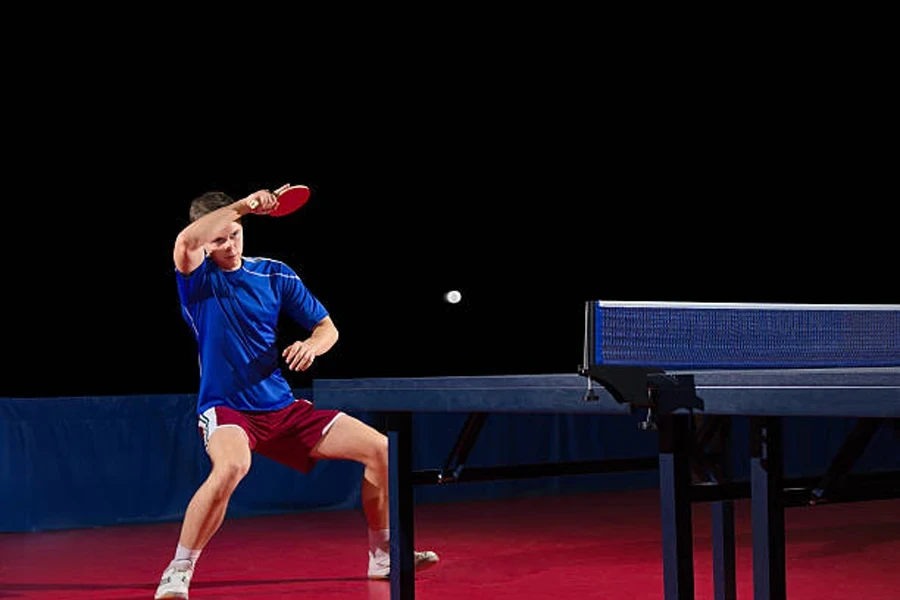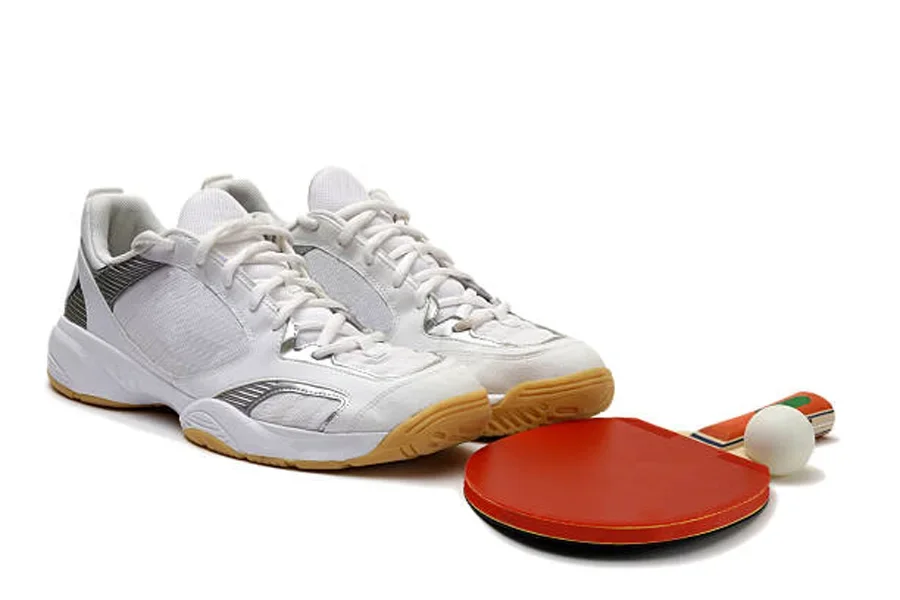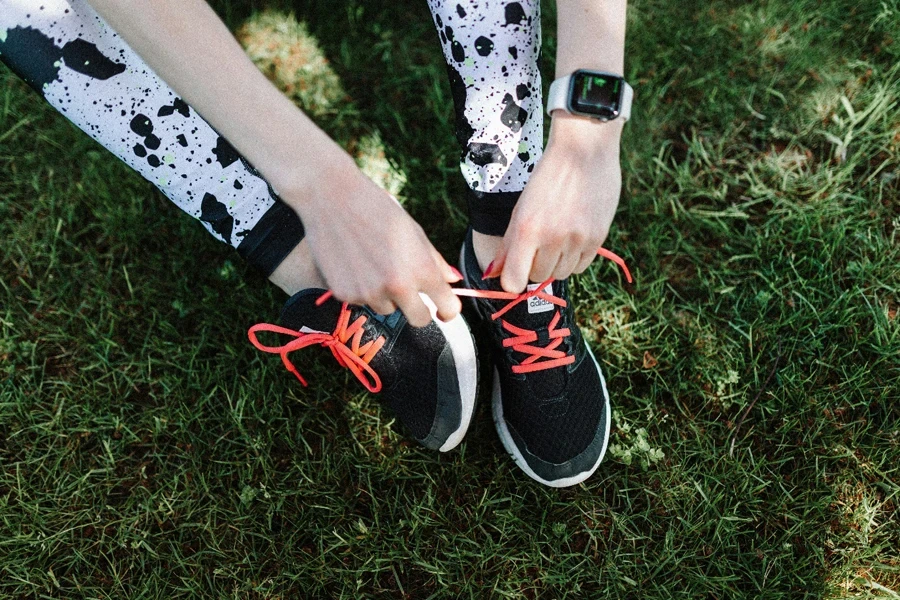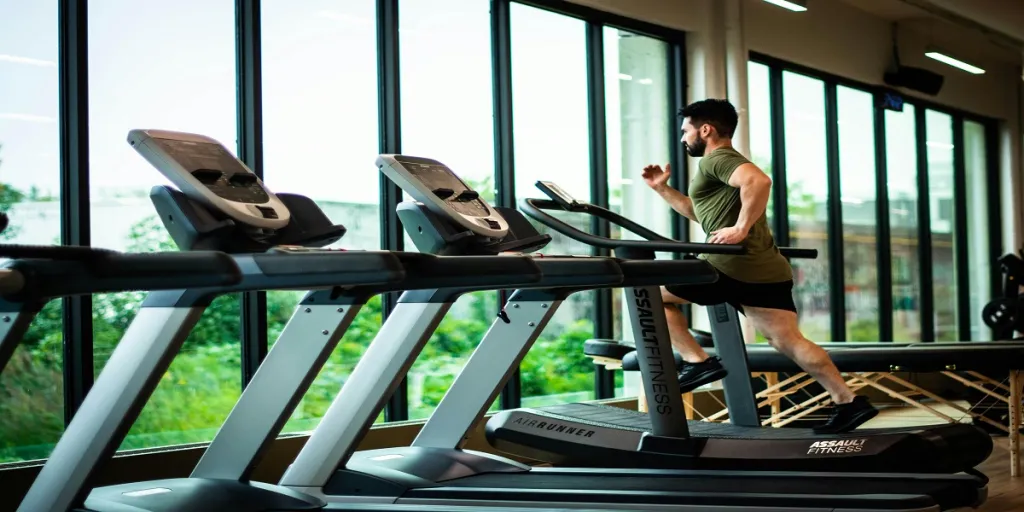Specialized table tennis footwear is essential for optimizing performance and reducing the risk of injury, especially in a sport that demands precision and agility. Understanding market trends and product innovations allows professional buyers to make informed decisions that align with their needs and goals. This article provides an in-depth guide to navigating the table tennis footwear market, exploring key options and considerations for selecting the ideal products.
Table of Contents
● The table tennis footwear market: Trends and growth
● Types of table tennis shoes: Features and advantages
● How to pick the perfect pair: A buyer’s guide
● Conclusion
The table tennis footwear market: Trends and growth

Market size and growth projections
The global table tennis footwear market was valued at $3.03 billion in 2023 and is projected to reach $4.54 billion by 2030, growing at a CAGR of 5.95%, according to giiresearch.com. This growth underscores the increasing demand for specialized footwear that enhances performance and reduces the risk of injuries among table tennis players. With a steady rise in competitive and recreational players worldwide, the market has positioned itself as a critical segment within the sports footwear industry.
Key drivers of market expansion
Several factors contribute to the rapid expansion of the table tennis footwear market. The rising popularity of table tennis globally has resulted in higher participation rates, creating a consistent demand for gear that supports agility, speed, and control. Innovations in footwear technology, such as lightweight materials, improved grip, and shock-absorbent designs, have further fueled market growth by offering players enhanced comfort and performance. Additionally, a global increase in health and fitness awareness has encouraged more individuals to participate in sports like table tennis, amplifying the need for specialized footwear tailored to different skill levels and playing environments.
Types of table tennis shoes: Features and advantages

Lightweight shoes for agility
Lightweight table tennis shoes are crafted using synthetic microfibers and low-density EVA midsoles to minimize weight while maintaining durability. These materials ensure players can execute rapid lateral movements and quick pivots with minimal resistance. Thin-profile outsoles, typically measuring under 10 mm in thickness, allow for closer contact with the floor, enhancing precision during footwork. This design reduces energy expenditure, keeping players agile during extended matches.
Shoes with enhanced grip
Enhanced grip in table tennis footwear is achieved through non-marking gum rubber soles with advanced tread patterns. These soles often feature hexagonal or herringbone designs, which increase surface area contact and improve traction on polished indoor courts. Additionally, some models incorporate multi-layer sole construction, which integrates a softer layer for initial grip and a firmer layer for lateral stability, ensuring seamless transitions during rapid movements.
Professional vs. beginner options
Professional-grade shoes, such as those used by elite players, include features like integrated shock absorption systems in the forefoot, providing protection during high-impact landings. Reinforced toe caps and sidewalls in these models prevent wear from aggressive slides and shuffles. In contrast, beginner shoes focus on basic functionality, with dual-density midsoles to balance cushioning and responsiveness, catering to players still developing their technique. Entry-level options also often have a simpler tread design optimized for general indoor use.
Material innovations

Advanced table tennis shoes use thermoplastic polyurethane (TPU) overlays for structural support without adding weight. These overlays reinforce areas prone to stress while maintaining the shoe’s flexibility. Breathable uppers made from woven mesh with large-pore structures improve airflow, reducing moisture accumulation during intense sessions. Some models incorporate anti-microbial footbeds that not only enhance comfort but also prolong the shoe’s lifespan by reducing odor and bacteria build-up.
Adaptation for flooring types
Shoes designed for wooden floors often utilize low-abrasion rubber compounds to maximize grip without scuffing the surface. For concrete courts, high-density rubber outsoles are preferred, as they resist wear caused by rough surfaces. Multi-court shoes feature adaptive sole designs, with segmented patterns that provide targeted traction zones and flexibility. The use of carbon fiber shanks in some advanced models helps distribute force evenly, ensuring stability regardless of surface type.
How to pick the perfect pair: A buyer’s guide

Weight considerations
The weight of table tennis shoes significantly influences player agility and endurance. Lightweight designs, often ranging between 200 and 300 grams per shoe, enhance speed and reduce fatigue during prolonged matches. Shoes incorporating low-density EVA midsoles and thin rubber outsoles ensure minimal resistance while maintaining structural integrity. Players should prioritize lighter shoes, especially for advanced gameplay requiring quick directional changes, as heavier models can impede movement and increase strain during intense rallies.
Sole durability and grip
Durable soles with excellent grip are vital for maintaining stability on various playing surfaces. Gum rubber compounds are commonly used for their high traction properties, ensuring optimal control during lateral movements. Advanced sole designs, such as multi-layer constructions or zonal traction patterns, extend the life of the shoe while providing targeted grip where it’s needed most. Shoes designed with abrasion-resistant compounds can endure the wear caused by repeated sliding and shuffling, making them a practical choice for competitive play.
Fit and comfort
A snug fit ensures maximum responsiveness during movement, while proper ventilation prevents discomfort during long sessions. Shoes with anatomical insoles and padded collars adapt to the natural shape of the foot, providing a secure yet flexible fit. Materials like microfiber uppers and breathable mesh panels promote airflow, reducing heat and moisture build-up. Selecting the correct size is crucial, as ill-fitting shoes can lead to reduced performance and a higher risk of injury.
Customization
Customizable features, such as removable insoles, allow players to tailor their shoes to their specific needs. Orthotic inserts can provide additional arch support, enhancing comfort for players with high arches or flat feet. For those requiring extra cushioning, gel or foam insoles can be added without compromising the shoe’s lightweight nature. These options enable players to adapt their footwear for maximum comfort and performance.
Price vs. value
Balancing cost and functionality is essential when choosing table tennis shoes. High-end models often include advanced features like shock-absorbing midsoles, enhanced grip technologies, and reinforced toe caps, justifying their higher price. However, budget-friendly options can still provide essential features like durability and traction for casual or beginner players. Evaluating the frequency of use and performance needs can help buyers identify the most cost-effective choice without sacrificing key benefits.
Conclusion

Investing in quality table tennis shoes is essential for enhancing performance, ensuring comfort, and preventing injuries during play. With advancements in materials and design, modern footwear offers features tailored to diverse skill levels and playing surfaces. By exploring the market and evaluating specific needs, professional buyers can select shoes that align with their requirements, enabling players to perform at their best with confidence and stability.




